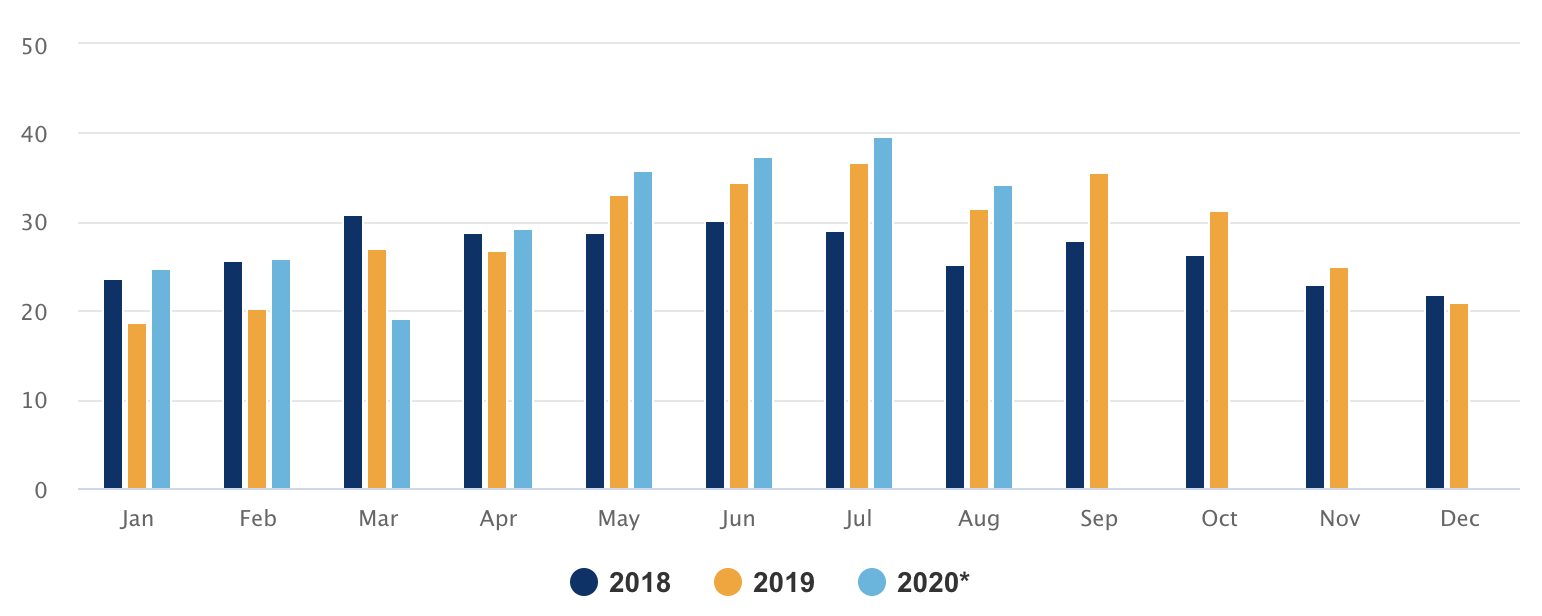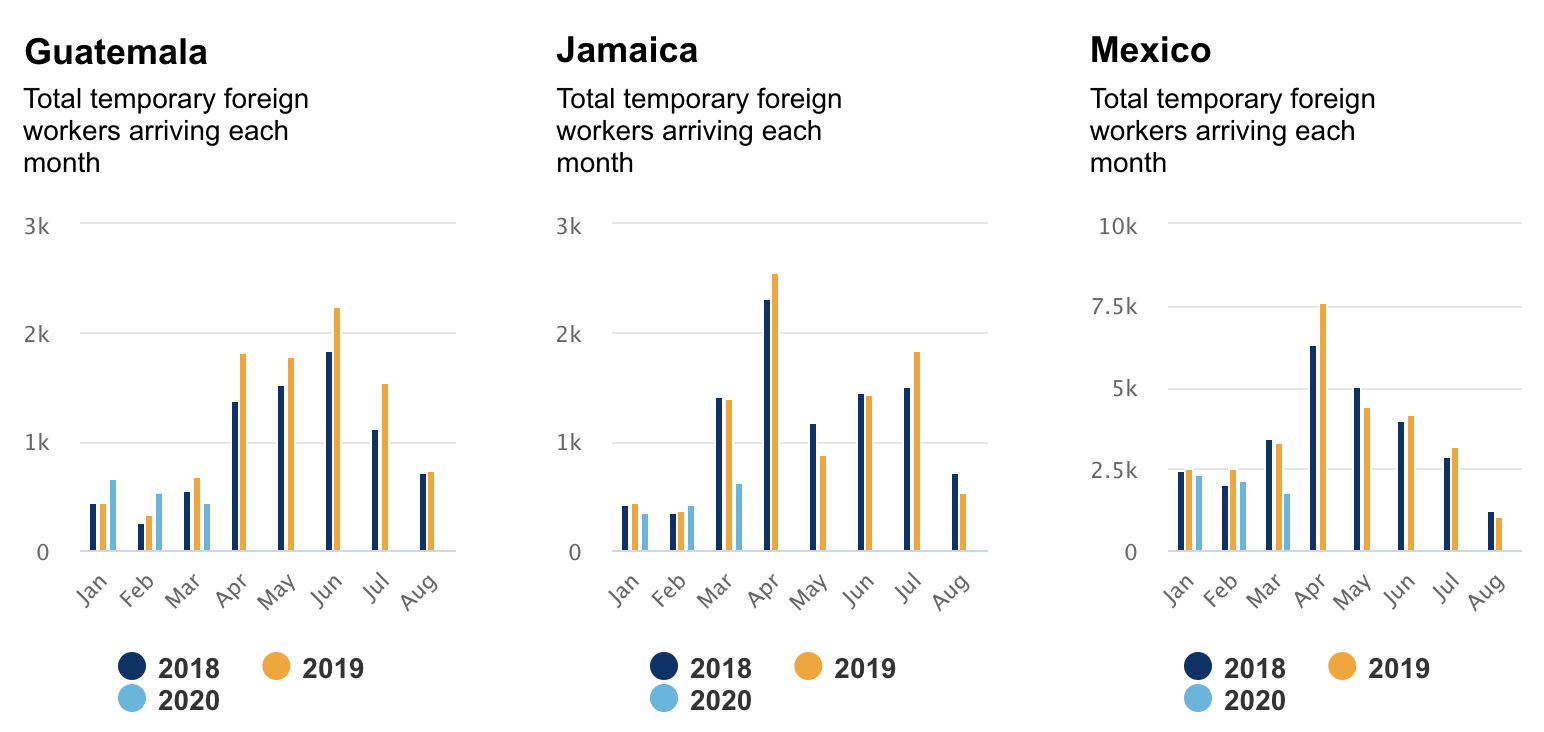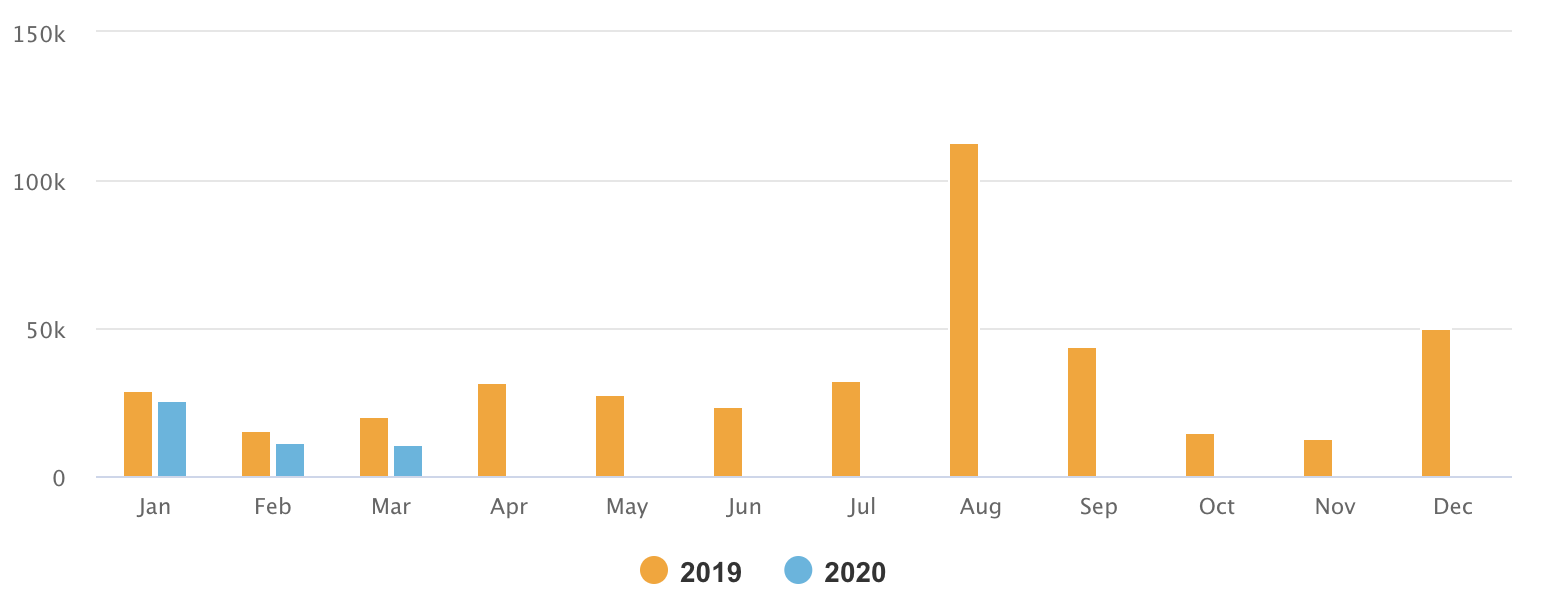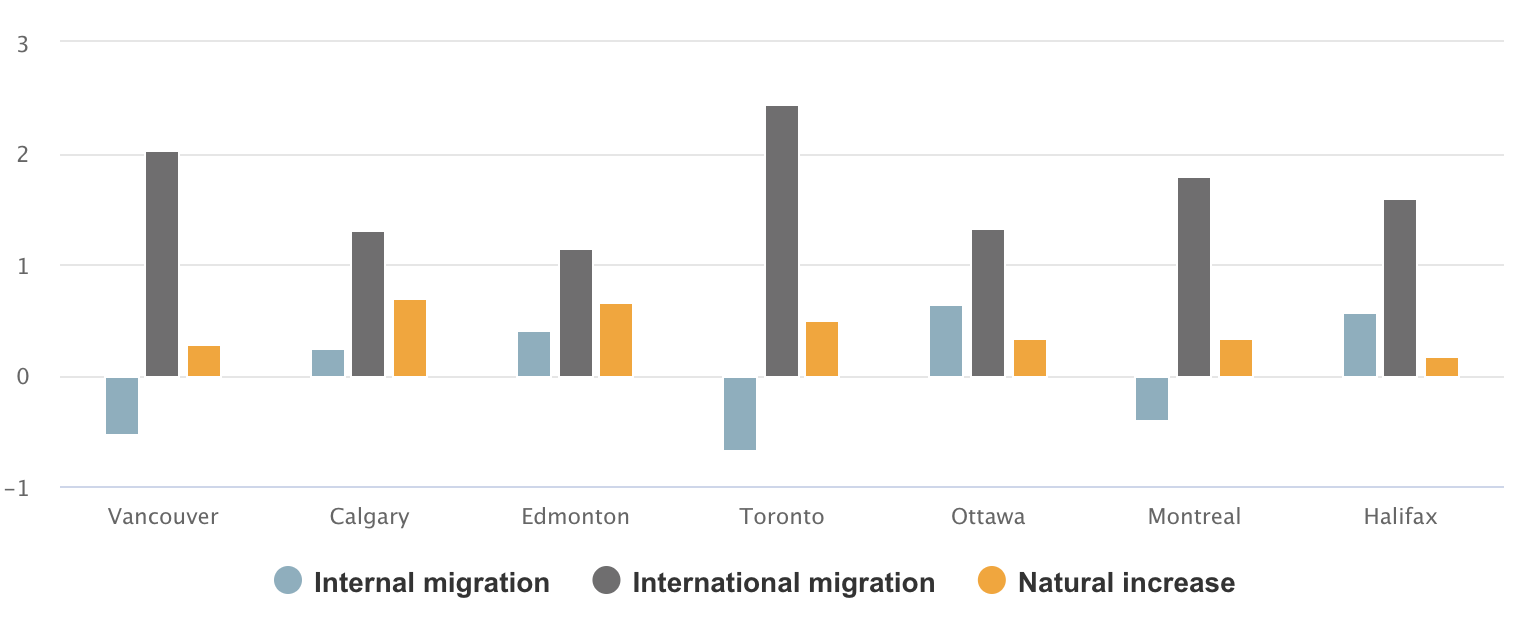Canada has been one of the world’s top destinations for immigrants, and this year was supposed to be no exception. On March 12, Ottawa released a plan calling for 370,000 new permanent residents in 2020, a tally that would have exceeded 2019’s record-setting 341,000 newcomers. Four days later, concerns about the spread of COVID-19 led Canada to implement travel restrictions that for all intents and purposes shut down immigration. Amid ongoing border restrictions, travel-related health fears, and the global economic downturn, we expect immigration levels to be down sharply in 2020. A recovery in 2021 will depend in part on the course of the pandemic.
The disruption will reverberate across the economy, given our reliance on immigration for labour-force growth and to offset Canada’s aging demographic. Among the potential casualties: industries with labour shortages, urban rental and housing markets, and university budgets. Canada will need a younger and growing population to maintain growth and support the unprecedented expansion of the fiscal deficit that came in response to the crisis.
Key Points:
- Permanent resident additions were down 30% in March versus a year earlier
- Temporary foreign worker entries in the agricultural sector fell 45% in March from a year earlier
- The number of students entering on study visas fell 45% in March from a year earlier
- The net loss of new permanent residents this year could total up to 170,000
From healthy growth to sudden stop
Travel restrictions and border closures cut off the flow of newcomers into Canada in mid-March. Only those whose permanent residency or study permits had been approved before March 18 are allowed to enter Canada, and in March permanent-resident additions were 30% below last year’s level.
If these restrictions last all summer, we expect to see 170,000 fewer permanent residents entering the country in 2020 than planned—all in a year in which Canada was supposed to welcome a record number of newcomers.
New permanent resident immigrating to Canada down significantly in March
Thousands (000s) of permanent residents entering Canada each month

Source: IRCC, RBC Economics | Apr 2020 to Aug 2020 - Projection
While temporary foreign workers are exempt from entry restrictions, fewer are coming. The overall number of TFWs entering Canada in March was down 35% versus the same month last year. In the agriculture sector—where they represent a key source of labour—the drop was an even sharper 45%, mainly to due big declines from the key source countries of Mexico, Guatemala and Jamaica. One possible explanation: TFWs are required to isolate in Canada for 14 days before starting to work—making the economic calculus for these workers that much more difficult. While Canada is offering $1,500 per worker to help buffer these costs, similar quarantines may exist in their home countries, limiting their ability to work once they get home. Ontario, Quebec, and British Columbia are especially at risk of TFW shortages in agriculture.
Agriculture workers expected for the summer may not come

Source: IRCC, RBC Economics
Refugee resettlement—which delivered around 150,000 newcomers to Canada in the last five years and has been a key source of pride for the federal Liberals—has stopped entirely.
There were also 45% fewer students entering on study visas in March, and fall enrolments are likely to be down sharply amid travel restrictions and a broad, possibly permanent shift to remote learning.
It remains to be seen if international students show up for classes in the fall
Thousands (000s) of international students entering Canada each month

Source: IRCC, RBC Economics
A lengthy slowdown in arrivals threatens growth, and an aging Canada has relied almost entirely on immigrants to grow
In 2019, Canada’s population grew by about 580,000 people (or 1.6%), with immigrants accounting for more than 80% of the increase. While more than 30% of the overall population is at least 55, only 8% of immigrants are. Indeed, almost two-thirds of immigrants are in the prime working ages between 25 and 54. Without immigration over the past 15 years, Canada would have aged on a similar trajectory as 1990s Japan. Instead, Canada is one of the younger countries in the G7.
Immigrant-rich cities are Canada’s growth engines
Nearly all of Canada’s largest cities have seen GDP grow faster than the national average, reflecting their large immigrant populations. In fact, with closed borders, Toronto, Vancouver and Montreal would all have seen declines in population in 2019, as Canadian-born millennials fled for more affordable outlying areas. A slowdown in immigrant-related demand for homes could squeeze the rental and housing markets.
International migration is the major driver for growth in Canada's cities
Percent growth (%) relative to population in 2018

Source: IRCC, RBC Economics
Heading towards a fiscal cliff
Even before the pandemic, Canada relied on immigration to offset the fiscal challenge posed by an aging population. With the tab of fighting COVID-19 already nearing $160 billion, Canada needs a growing labour force more than ever. Canada entered this crisis with a federal debt-to-GDP ratio (31%) that was lower than many other major economies, but limited fiscal wiggle room to maintain it, according to the Parliamentary Budget Office. Its projections, however, assumed Ottawa would maintain healthy immigration numbers, and didn’t take into account the added costs of supporting a COVID-stricken economy.
Foreign students are a key source of revenue for post-secondary schools
Canada’s colleges and universities have come to rely on international students to bolster enrolment as growth in domestic students plateaued over the past 10 years. While those international students who are already in Canada to study are allowed to remain, closed borders—and schools’ move to online learning—could weigh on enrolments this fall. That reduction could also hurt the small businesses and landlords who depend on these students for revenue. International students contribute over $6 billion in tuition alone each year. (Consider the University of Toronto, which has seen international enrolments double since 2010 to 25% of the student body. If just one-fifth of its foreign students decide not to study in Canada this year, it could see a shortfall of around $200 million on a $3 billion budget.) A decline in foreign students could also affect what’s been an important source of new permanent residents. Last year, some 11,000 new permanent residents had previously studied in Canada.
Andrew Agopsowicz is a Senior Economist working in both the Economics and Thought Leadership groups. He studies the labour market – largely focusing on the future of work, demographic change, diversity, and human capital. Before joining RBC, Andrew was a Senior Economist at the Bank of Canada.
This article is intended as general information only and is not to be relied upon as constituting legal, financial or other professional advice. A professional advisor should be consulted regarding your specific situation. Information presented is believed to be factual and up-to-date but we do not guarantee its accuracy and it should not be regarded as a complete analysis of the subjects discussed. All expressions of opinion reflect the judgment of the authors as of the date of publication and are subject to change. No endorsement of any third parties or their advice, opinions, information, products or services is expressly given or implied by Royal Bank of Canada or any of its affiliates.
